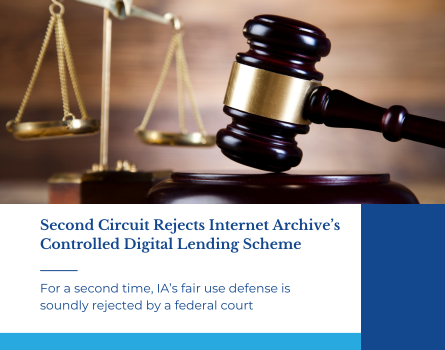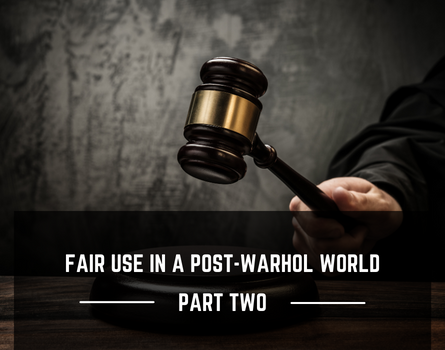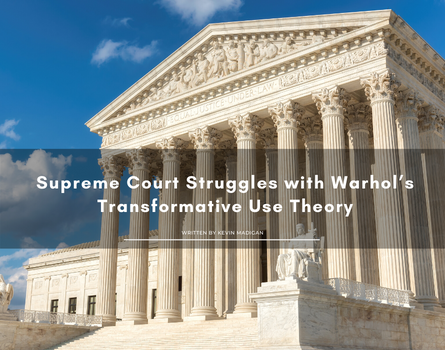Kevin Madigan is SVP, Policy and Government Affairs at the Copyright Alliance. Kevin joined the Copyright Alliance in early 2020. Kevin’s work in copyright includes drafting amicus briefs, regulatory comments, policy papers, and essays on diverse topics such as public performance rights, copyright office modernization, the Music Modernization Act, the CASE Act, and the European Copyright Directive. To learn more about his career background and achievements, read Kevin's full bio. Below is a compilation of every blog Kevin has ever written for the Copyright Alliance.

Generative AI Licensing Isn’t Just Possible, It’s Essential
There is a recurring argument made by many generative AI companies and their supporters that getting permission to use copyright-protected material to train AI models is overly burdensome and would […]

Second Circuit Rejects Internet Archive’s Controlled Digital Lending Scheme
For a second time, IA’s fair use defense is soundly rejected by a federal court On September 4, a panel of judges in the U.S. Court of Appeals for the […]

Top Takeaways from Order in the Andersen v. Stability AI Copyright Case
On August 12, an order granting in part and denying in part motions to dismiss a first amended complaint was issued by Judge William Orrick (in the Northern District of […]

Mid-Year Review: AI Lawsuit Developments in 2024
The development and launch of new generative artificial intelligence (AI) technologies over the last two years has been revolutionary. But these advancements have been accompanied by significant concerns from copyright […]

Fair Use in a Post-Warhol World: Part II
In part one of this blog, we looked at a number of photography and documentary film copyright cases that have been decided since the Andy Warhol Foundation v. Goldsmith opinion was […]

Fair Use in a Post-Warhol World: Part I
In May of last year, the Supreme Court handed down its much-anticipated fair use decision in Andy Warhol Foundation v. Goldsmith (referred to as Warhol throughout this blog). At the […]

Copyright Cases in 2023: A Year in Review
Copyright enthusiasts knew that 2023 would bring with it a highly anticipated decision in one of the biggest fair use cases in decades: Andy Warhol Foundation v. Lynn Goldsmith. Indeed, […]

Landmark Warhol Decision Reins in Transformative Fair Use
Yesterday, the Supreme Court, in a 7-2 opinion written by Justice Sonia Sotomayor, found that the purpose and character of the Andy Warhol Foundation’s (AWF) use of Lynn Goldsmith’s photograph […]

Copyright Cases in 2022: A Year in Review
Coverage of copyright litigation in 2022 was understandably focused on the Supreme Court’s transformative fair use showdown in Warhol Foundation v. Goldsmith, but the past year saw many other significant […]

Supreme Court Struggles with Warhol’s Transformative Use Theory
On October 12, the Supreme Court heard oral arguments in the highly anticipated transformative use copyright showdown between photographer Lynn Goldsmith and the Andy Warhol Foundation (AWF). The arguments lasted […]

